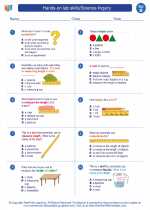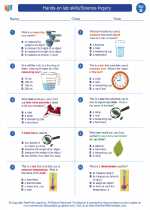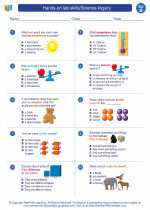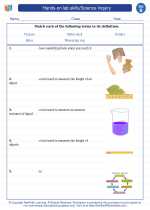Organisms
An organism is a living thing that can carry out all basic life processes. This includes processes such as growth, reproduction, response to stimuli, and obtaining and using energy. Organisms can be as simple as a single-celled bacteria or as complex as a human being.
Types of Organisms
There are several different types of organisms, which can be classified based on their cellular structure and how they obtain energy. The main types of organisms are:
- Unicellular Organisms: These are organisms that are made up of a single cell. Examples include bacteria, protists, and some types of algae.
- Multi-cellular Organisms: These are organisms that are made up of more than one cell. Examples include plants, animals, and fungi.
- Prokaryotic Organisms: These are organisms that lack a distinct nucleus and other membrane-bound organelles. Bacteria are an example of prokaryotic organisms.
- Eukaryotic Organisms: These are organisms that have a distinct nucleus and other membrane-bound organelles. Plants, animals, and fungi are examples of eukaryotic organisms.
- Autotrophic Organisms: These are organisms that can produce their own food using energy from sunlight or inorganic compounds. Plants are autotrophic organisms.
- Heterotrophic Organisms: These are organisms that obtain energy by consuming other organisms. Animals and some types of bacteria are heterotrophic organisms.
Characteristics of Organisms
Organisms share certain characteristics that define life. These characteristics include:
- Growth: Organisms can grow and increase in size by increasing the number of cells or the size of their cells.
- Reproduction: Organisms can produce offspring either sexually or asexually, ensuring the continuation of their species.
- Response to Stimuli: Organisms can respond to changes in their environment or internal conditions, allowing them to adapt and survive.
- Homeostasis: Organisms can maintain a stable internal environment despite changes in the external environment.
- Metabolism: Organisms can obtain and use energy to carry out life processes, such as growth, movement, and reproduction.
Study Guide
Here are some key points to remember about organisms:
- What are the basic life processes that organisms can carry out?
- What are the main types of organisms based on cellular structure?
- Give examples of unicellular and multi-cellular organisms.
- What are the differences between prokaryotic and eukaryotic organisms?
- How do autotrophic and heterotrophic organisms obtain energy?
- List and explain the characteristics of organisms that define life.
By understanding the different types of organisms and their characteristics, we can gain a deeper appreciation for the diversity of life on Earth and the fundamental processes that sustain living organisms.
.◂Science Worksheets and Study Guides Second Grade. Hands-on lab skills/Science Inquiry

 Worksheet/Answer key
Worksheet/Answer key
 Worksheet/Answer key
Worksheet/Answer key
 Worksheet/Answer key
Worksheet/Answer key
 Vocabulary/Answer key
Vocabulary/Answer key
